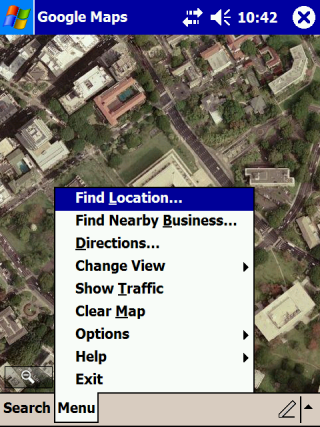My old friend Frank McPherson and I have some minor differences of opinion about the rumored Zune phone. He posted an interesting op-ed-piece in his blog about the rationale for a Zune phone. I responded in my blog. And, he volleyed another set of discussion items. To summarize Franks original points:
- The Zune Phone is in response to the Apple iPhone
- Microsoft Voice Command is the secret weapon to counter the iPhone’s multi-touch feature
- Microsoft doesn’t need a Zune Phone. It just needs to make the Windows Mobile Phone better
Frank fired back with a follow-up blog titled: More About Zune Phone.
As far as I can tell, I think Frank and are converging towards mostly agreement. The only remaining issue is Microsoft Voice Command. Voice Command is a Microsoft add-on application for Pocket PC/Phone Edition and Smartphone that provides voice command faetures. In other words, you can use specific words to launch applications or dial a phone by saying a person’s name or the individual phone number digits. It is not a continuous speech recognition system that lets you, for example, dictate your weekly report into a text editor. Like handwriting recognition, voice command recognition is just too error prone and requires a change to the way you speak. Depending on your microphone, you may also have issues with ambient noise levels. It is not something you can trust while, for example, running through a busy airport and trying to reschedule a connecting flight. Voice Command is not going to be the killer feature.
In fact, the Apple iPhone’s main issue may be its own high price and its mobile phone carrier choice which for the past few years had its shares of customer relationship management issues as well as a relatively high data plan for smartphone.
The Zune is a non-starter. It has not even dented the iPod’s market share. I doubt if a Zune Phone will do anything more than reduce the market share of Microsoft’s own Windows Mobile phone devices. That said, after my own irrational exhuberance about the Apple iPhone, I’m beginning to agree with other mobile device observers that the Apple iPhone may implode on itself if its initial rollout is not handled properly this summer. It should be interesting to watch what happens to the phone market this summer.
 Google released a Google Maps client for Windows Mobile that installs from a CAB file that can be downloaded and installed directly from Google (no need to sync with a PC). It is also a native application. No Java Midlet needed. This means it is fast and looks good on a Windows Mobile device. I tested it on an old Dell Axim X50v running Windows Mobile 2003 Second Edition. As you can see from the screen cap, the satellite image view looks nice and clear on its screen and the menu looks like most other native applications.
Google released a Google Maps client for Windows Mobile that installs from a CAB file that can be downloaded and installed directly from Google (no need to sync with a PC). It is also a native application. No Java Midlet needed. This means it is fast and looks good on a Windows Mobile device. I tested it on an old Dell Axim X50v running Windows Mobile 2003 Second Edition. As you can see from the screen cap, the satellite image view looks nice and clear on its screen and the menu looks like most other native applications.